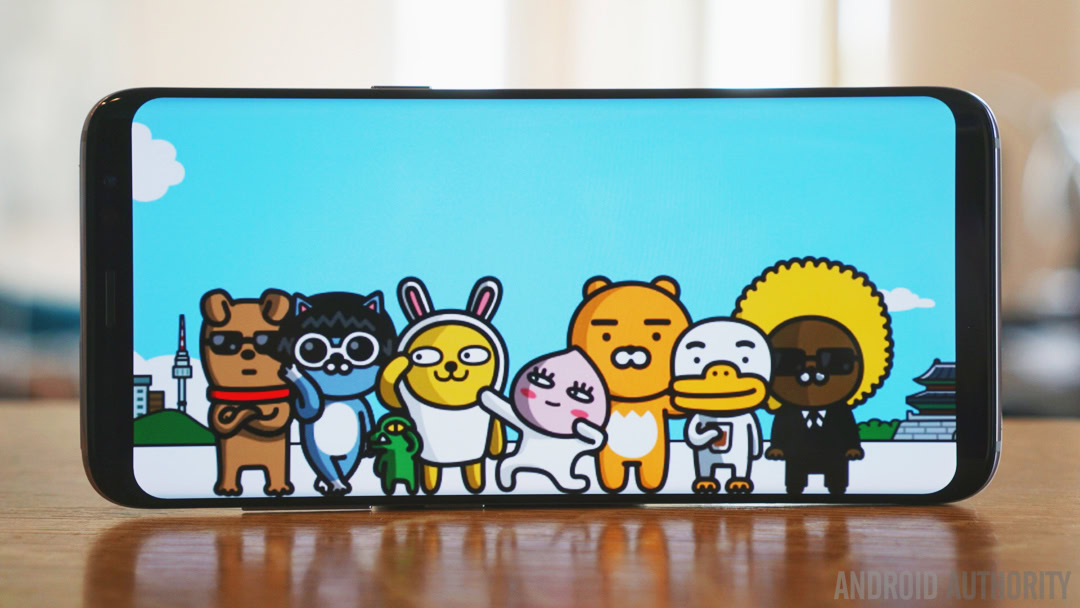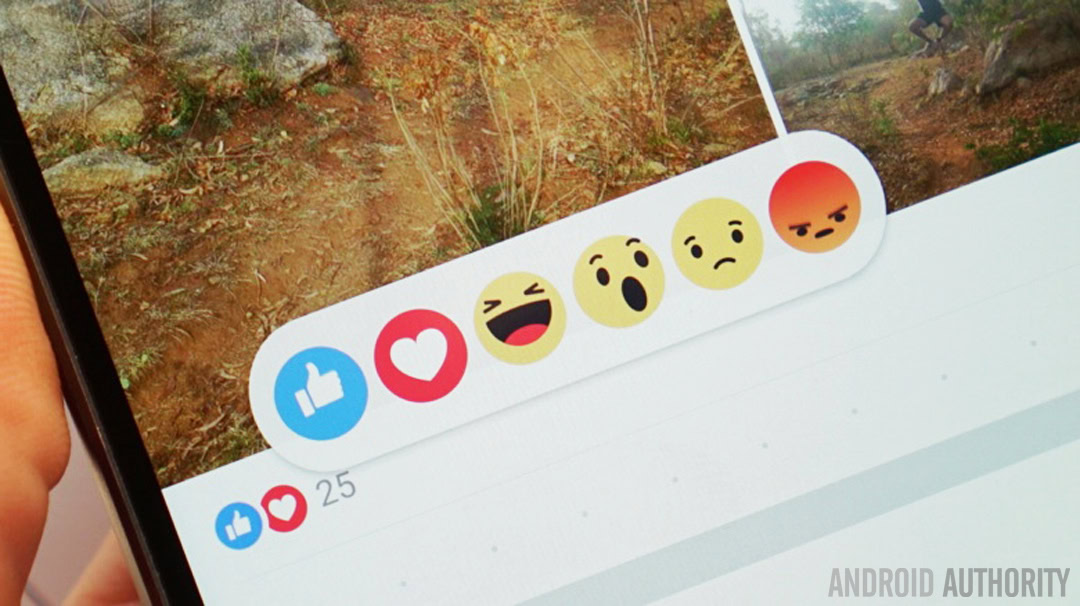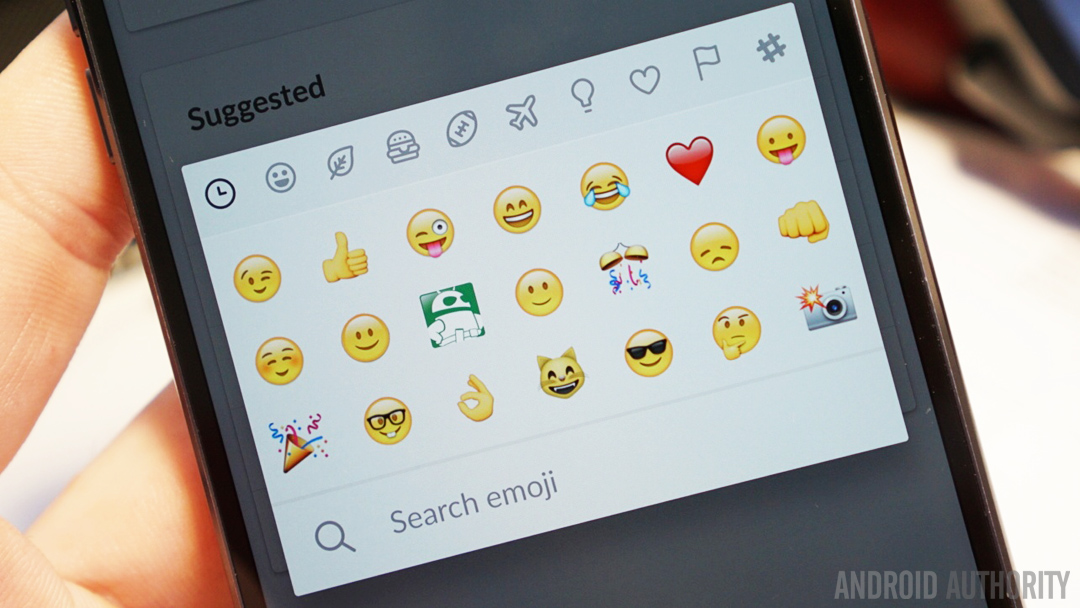Affiliate links on Android Authority may earn us a commission. Learn more.
Obsessed with emoji: why we love them so much
Published onApril 22, 2017

People love emoji, that’s no secret. But I mean we really, really love them. Emoji and their fancier brethren, stickers, have seriously taken off in recent years. So much so that in South Korea this week, the Korea Creative Content Agency announced that the most popular characters in the country are no longer found in Korean cartoons, on animated TV shows or even in the pages of Japanese manga. No, in 2017, the most popular characters in all of South Korea are found in KakaoTalk sticker packs.
While that might seem insane to some folks – just imagine Mickey Mouse, Superman and Homer Simpson being less popular than the poop emoji – the truth is, that day is probably not far away. The reason, when that day inevitably comes, is probably going to be similar to the way a Korean messaging app’s sticker cartoons became that country’s most popular characters: ubiquity.
For starters, I’m positive you share emoji and stickers a lot more than you do Homer quotes, Superman GIFs or Mickey Mouse memes. The rise of messaging apps and the natural human impulse towards visual shorthand has meant that emoticons and then then emoji and stickers have become our digital shorthand for a variety of things we couldn’t be bothered typing.

This is hardly anything new: ever since computers entered the mainstream there have been a variety of abbreviations used to shorten longer common phrases (the first documented emoticon was sent way back in 1982).
As our communications steadily entered a more visual realm – that of image and video sharing via messaging apps – our abbreviations became more visual as well. They are our attempt to imbue our textual communications with a little more feeling in the absence of tone and body language and all that other good stuff.
Emoji imbue our textual communications with a little more feeling in the absence of tone and body language.
Like language, through repeated use emoji acquire more significance and meaning too; meanings far beyond their original intention or definition. Take the poop emoji for example, if there was ever an instance of something highly specific and kinda nasty becoming an unlikely pop icon of sorts, the poop emoji is it. It functions like slang, co-opted into everyday usage and stripped of its original meaning.
Every group of friends has a specific emoji shorthand full of inside jokes, just like slang.
I would even argue that emoji and stickers can be just as rich and full of personality as cartoon characters. KakaoTalk Friends, as they are called, are heavily marketed in their own retail stores on all manner of souvenirs and clothing, just like more familiar characters. A lot of people have probably never seen a Mickey Mouse cartoon and yet still have a very strong idea of what the character is about.
The same can be said of emoji, it’s just that we’ve given them their meaning and back story rather than their original creators, much like memes. Every group of friends has a specific emoji shorthand full of inside jokes, references and other such shared understanding, it’s just natural considering how often we use them.
Amazing Mom throws her daughter the ultimate poop-themed party https://t.co/Tyfv1LHI6i #PoopEmoji #Poop #Party pic.twitter.com/R80NNa54Yp— Toggle Time (@toggltime) April 12, 2017
The fact that a lot of people don’t even know exactly what a particular emoji is “meant” to express just goes to show how adaptable they are. Everyone has been in the position of finding out they’ve been using an emoji the wrong way. For the longest time I thought the fist emoji was meant to mean a fist bump, but later found out it meant a punch in the face. But as long as my circle of friends know what I mean, I’m golden.
Misunderstandings are still possible: everyone has discovered they've been using an emoji the wrong way sooner or later.
The same can be said of language: misuse it however you like as long as you’re understood by your audience. In this respect, emoji are even more powerful because emoji function similarly even across language barriers. There may still be some room for misinterpretation, even within speakers of the same language, but the basics are pretty universal.
Humans also have a natural affinity toward the visual image, especially when it’s anthropomorphic. We like emoji because emoji are us, or so the theory goes. But I tend to think that emoji aren’t so much a stand-in for us, but a kind of meta-reaction to a situation or statement, more like what we typically say about something than how we look when we hear it.
Emoji are more like what we typically say about something than how we look when we hear it.
You know what I mean, just think of ROFL and LOL; we all know that when someone sends us a surprised emoji that they aren’t doing the same thing in real life. Much like someone saying “that’s so funny” without even smiling, emoji are an over-the-top version of our reactions, like pantomime, rather than a realistic imitation of how the sender has responded. They over-compensate for the absence of feeling in most of our communications. Even Facebook recently caved in and changed the lame thumbs up Like button to allow for a broader range of “emotional” responses.

Emoji help avoid the kinds of misunderstandings that frequently crop up in our dislocated text-driven world.
But emoji also allow us to avoid the kinds of misunderstandings that frequently crop up in our dislocated text-driven world. Just think of how many times a text message you’ve sent has been misinterpreted. I’m sure that number has decreased dramatically since emoji became a staple of our online communications (and they’re now entering the workplace for similar reasons).
An emoji at the start of a tweet can help you set the tone for what follows. An emoji at the end of a status update can serve as a punchline, re-casting everything that came before. You can communicate entire sentences in emoji or replace long words with them. Some have become as ubiquitous as the smiley face or peace sign. But beyond framing or replacing text, emoji also seem to be imbued with some mysterious primal power.
People who use emoji have more sex; Push notifications with emoji are 85 percent more likely to be opened; We even respond to emoji like we do to the human face.
To give you a few far-ranging examples: apps in Google Play with an emoji in the app description are more likely to be installed. People who use emoji have more sex. Push notifications with emoji are 85 percent more likely to be opened. We respond to emoji like we do to the human face, no matter how un-lifelike they are.
Far from some sort of regressive hieroglyphic communication quicksand, emoji are actually an advancement of the written word. Shakespeare may not have thought to add face-like grammatical markers to his compositions to set the tone, but then, most people these days don’t write as expressively as old Bill did.

These days our time is precious, we want quick, meaningful and feeling-driven communication in a readily accessible and understandable form, and emoji serve that purpose perfectly. Short voice and video messages in messaging apps are simply an extension of what emoji achieve in a much shorter amount of time.
Emoji are so useful they’ve even outgrown their textual origins. Many of you would have seen emoji faces overlaid on top of actual people’s faces in a YouTube video or Snap. Just let that sink in for a moment: we’re now at a point where emoji are so powerful at representing human emotions that we’ll even use emoji in place of actual human emotion, even when the person is present.
Our time is precious: we want quick, meaningful and feeling-driven communication, and emoji serve that purpose perfectly.
So the next time someone you know complains about the use of emoji, let them know that emoji usage is one step closer to real-time hologram comms or whatever it is we’ll be using in 20 years. Emoji are simply one of the first steps toward making internet-based communications more lifelike.
If we can’t be there in the flesh to add non-verbal flair to what we’re saying, emoji are the next best thing. And if you think something with the power, adaptability and ubiquity of language, the emotional, contextual and expressive capabilities of human reactions and the universal comprehensibility of emoji couldn’t one day supplant some tired old cartoon characters, think again.